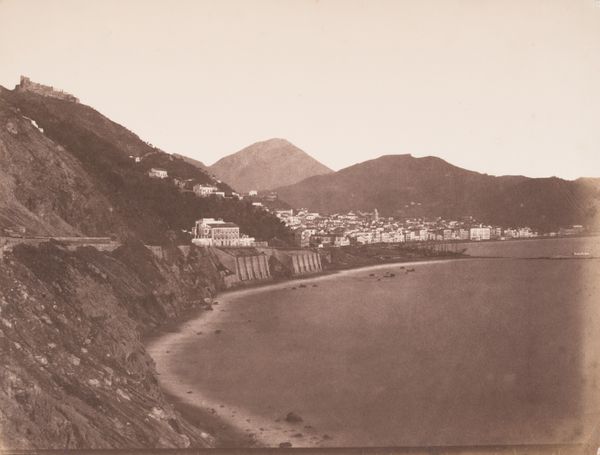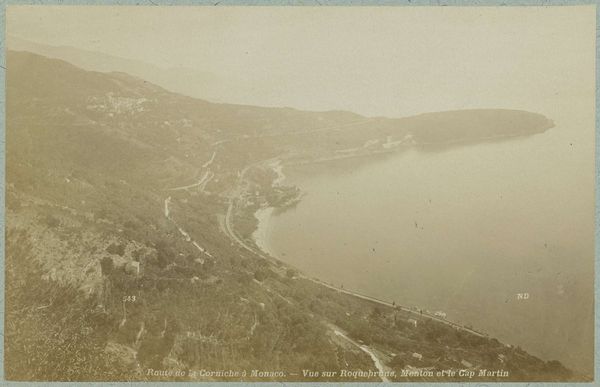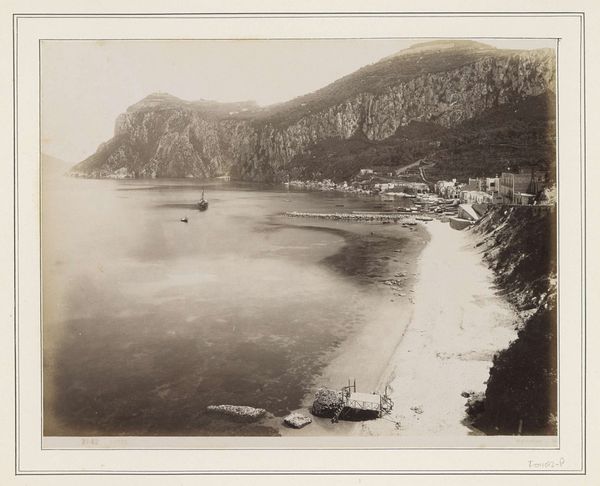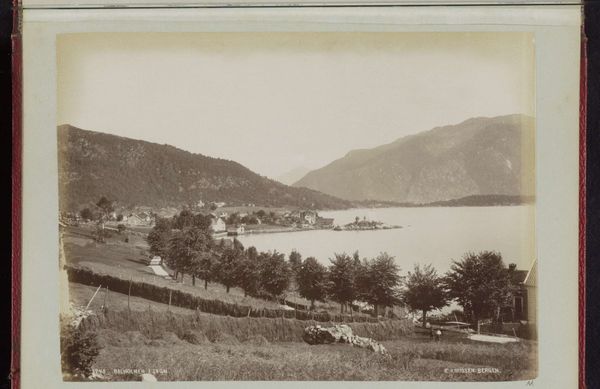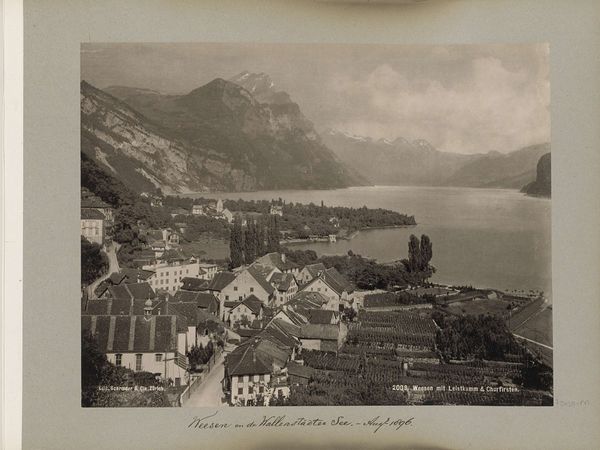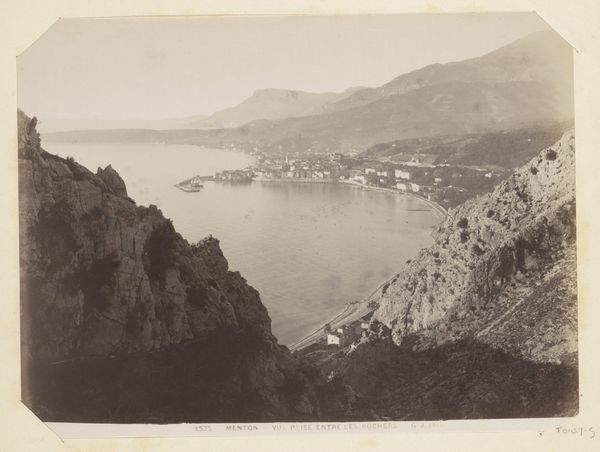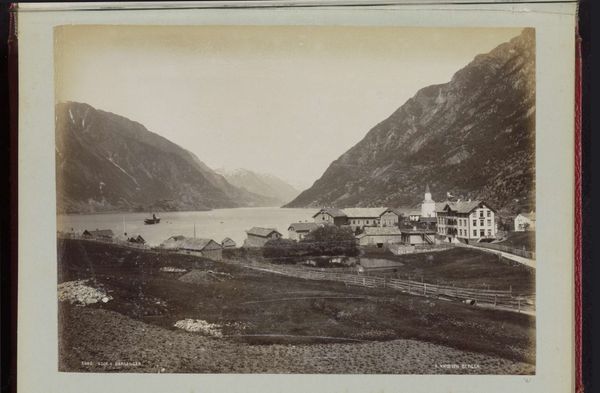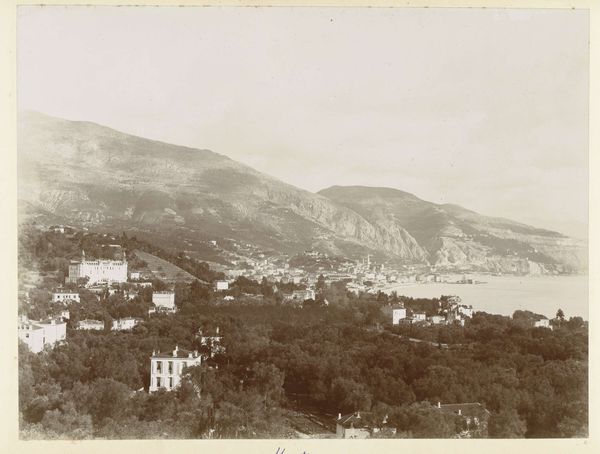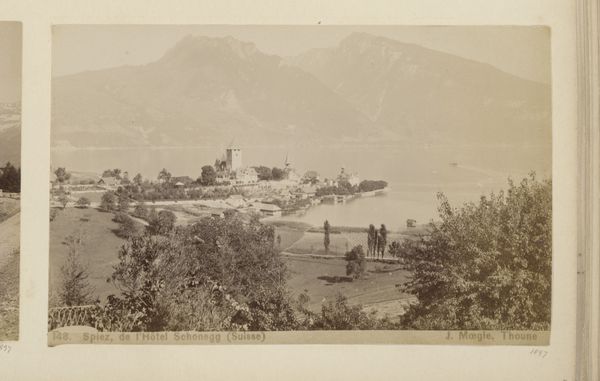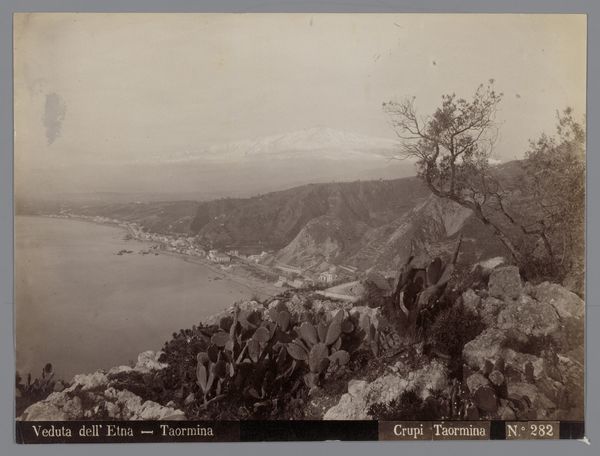
print, photography, albumen-print
# print
#
landscape
#
photography
#
mixed medium
#
mixed media
#
watercolor
#
albumen-print
Dimensions: height 218 mm, width 790 mm
Copyright: Rijks Museum: Open Domain
Editor: Here we have “Panorama van de stad en het meer van Lugano” by Schröder & Co, likely created between 1890 and 1920. It’s a long, landscape print, using albumen-print. I’m struck by how it’s divided into sections, creating a segmented, almost surreal panoramic view. What are your initial thoughts when you look at the formal aspects of this piece? Curator: Formally, I'm interested in how the tripartite division dictates our reading of the landscape. Each panel, while seamlessly joined, presents a subtly different perspective, thereby disrupting the traditional panoramic sweep. Note how the tonality shifts slightly from left to right. Do you perceive this as a conscious effort to underscore the artificiality of the construct, or simply a consequence of the photographic process of that era? Editor: That’s interesting! It could definitely be either. The contrast and clarity do shift. Now that you mention the triptych construction and slight variations in tonality, I find it harder to ignore those aspects! But does this detract or contribute to the work as a whole? Curator: Precisely! It complicates our understanding. While it might appear fragmented, this very fragmentation underscores the limitations inherent in representing three-dimensional space on a two-dimensional surface. Furthermore, consider the interplay between the detailed foreground and the receding planes. Does it suggest an engagement with modernist concepts of space and representation, even within a seemingly conventional landscape format? Editor: I can see that. It’s less a direct transcription of the landscape and more an active interpretation. Thank you for highlighting those construction decisions – it really transforms my understanding of the piece. Curator: Indeed. It reveals how the supposed objectivity of photography can be skillfully manipulated to convey subjective and aesthetic meanings.
Comments
No comments
Be the first to comment and join the conversation on the ultimate creative platform.
